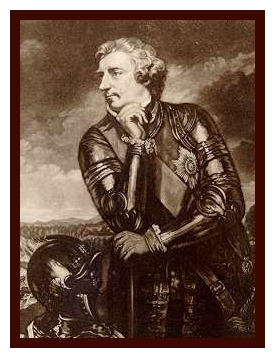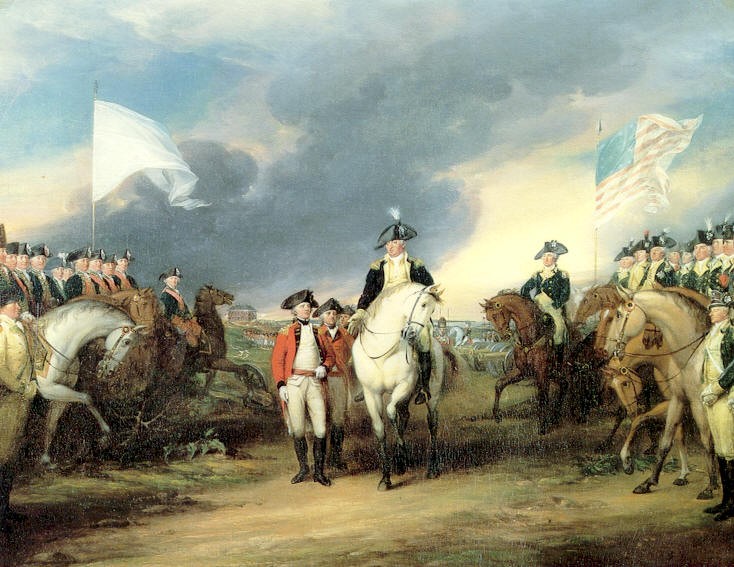 username@email.com
username@email.com
This lesson will review the conditions and causes that led up to the Revolutionary War. The review will also look at people and nations that played key roles in the conflict and examine the ideas expressed in the Declaration of Independence.
The previous lesson reviewed the era when European explorers and conquerors landed on the North American continent. This lesson also discussed slavery in the colonies and examined some of the major figures of the era.
Below are some of the events that eventually led Britain and her colonies to war:
In an effort to force colonists to purchase sugar and molasses from their constituents in the West Indies, the British Parliament started taxing and imposing shipment restrictions on sugar and molasses that were imported into the American colonies from the French West Indies. The higher tax and imposition of economic force by Britain did not sit well with the colonists, who were struggling economically.
The last phase of the Seven Years’ War between Britain and France, the French and Indian War began in 1754 as a struggle over which colonial power would control the upper Ohio River valley. Native Americans joined the fight on the French side, but the British were victorious. The Treaty of Paris in 1763 ended the war. Britain won the lion’s share of the land, marking Britain as a colonial power. War debts and problems associated with governing vast colonial territories would play a role in bringing about the Revolutionary War during the next decade.
British treatment of Native Americans after the French and Indian War touched off Pontiac’s War. This conflict between the British forces and the tribes of the Great Lakes region hastened another decree from Britain, the Royal Proclamation of 1763. This act prohibited colonists from settling in the land beyond the Appalachian Mountains or in any of the lands Britain had captured from France in the French and Indian War. The colonists viewed the act as meddling interference in their affairs; the colonists moved closer to rebellion.

General Jeffrey Amherst’s unfair treatment of Native Americans after the French and Indian War helped spur on Pontiac’s War
In 1765, Britain passed the Stamp Act, which taxed all colonial commercial and legal papers, newspapers, pamphlets, cards, almanacs, and other items. Colonists vigorously resisted and nullified the Stamp Act, which Britain repealed in 1766. The Stamp Act and its defeat bolstered the colonists’ belief in their independence and their faith that they could organize against the crown.
Coined by propagandist Samuel Adams, the Boston Massacre involved British soldiers firing on civilians in Boston. When the merchant ship Liberty was seized on suspicion that it was in violation of the Townshend Acts, the citizens of Boston protested, prompting British officials to quarter troops in the city. With tensions high, British soldiers fired on a group of Bostonians who were pelting the soldiers with snowballs and debris. Crispus Attucks, a young black sailor, was killed in the incident. This event was yet another that moved the colonies toward open rebellion.
On December 16, 1773, a group named the Sons of Liberty, led by Samuel Adams and dressed as Mohawk Indians, approached Griffin’s Wharf where three ships loaded with tea, the Dartmouth, the Eleanor, and the Beaver, were anchored. The men boarded the ships and destroyed the crates of tea. By 9 p.m., the men had destroyed and thrown into the Boston Harbor some 340 crates of tea.
Convened in late 1774, the First Continental Congress forged an official bond among the thirteen colonies. The main thrust of the First Continental Congress was an organized boycott of British goods and services, as well as the halting of all exports to Britain.
However, the following year brought open fighting between the colonists and the British in the form of the Battle of Lexington and Concord in April of 1775. The following month, the Second Continental Congress came together and formed the Continental army under the command of George Washington. This same Continental Congress ratified the Declaration of Independence on July 4, 1776.
Click here to see some of the key contributors to the Declaration of Independence.
Which philosopher’s ideas about government contributed to the Declaration of Independence?
The correct answer is A. John Locke wrote extensively on government and was a proponent of the idea that governmental power can come only from the consent of the governed—a key idea in the colonists’ assertion of independence.
Signed in 1763, the Treaty of Paris ended which of the following wars?
Answer C is correct. With this treaty, Britain gained control of vast amounts of the North American continent, which Britain won by defeating the French. This particular Treaty of Paris should not be confused with the Treaty of Paris that ended the American Revolutionary War in 1781.
After many pitched battles throughout the colonies, the British finally surrendered in Yorktown in 1781. General Lord Cornwallis’s troops were confined to the Yorktown peninsula as French ships blocked his supply lines. He was forced to surrender on October 19, 1781.

Because Cornwallis could not be present, military tradition required Washington’s subordinate to accept the surrender. Washington is on horseback in the background on the right side of the painting
Upon hearing of the defeat, British Prime Minister Lord North resigned. Although sporadic fighting remained, the conflict was effectively over. The British signed the Treaty of Paris in 1783, which defined the thirteen colonies as sovereign states.
France entered the war on the side of the colonists in 1778. France’s involvement was crucial to the colonists’ victory. The country sent not only troops but also supplies, medicine, and machinery.
Over the course of the war, Britain hired some 30,000 German mercenaries to fight in North America. These troops were known as Hessians; many came from the German town of Hesse.
Spain sent supplies and medicines to aid the colonists but did not send troops. However, some Spanish colonials did join the fight in the southern colonies.
How did the French and Indian War affect France’s involvement in the colonists’ war for independence?
Answer C is correct. Recall that France lost the French and Indian War to the British and lost the bulk of its claim to North American land. This, coupled with Britain’s status as an emerging superpower, led the French to help the colonists. French involvement was key to the colonists’ eventual victory.